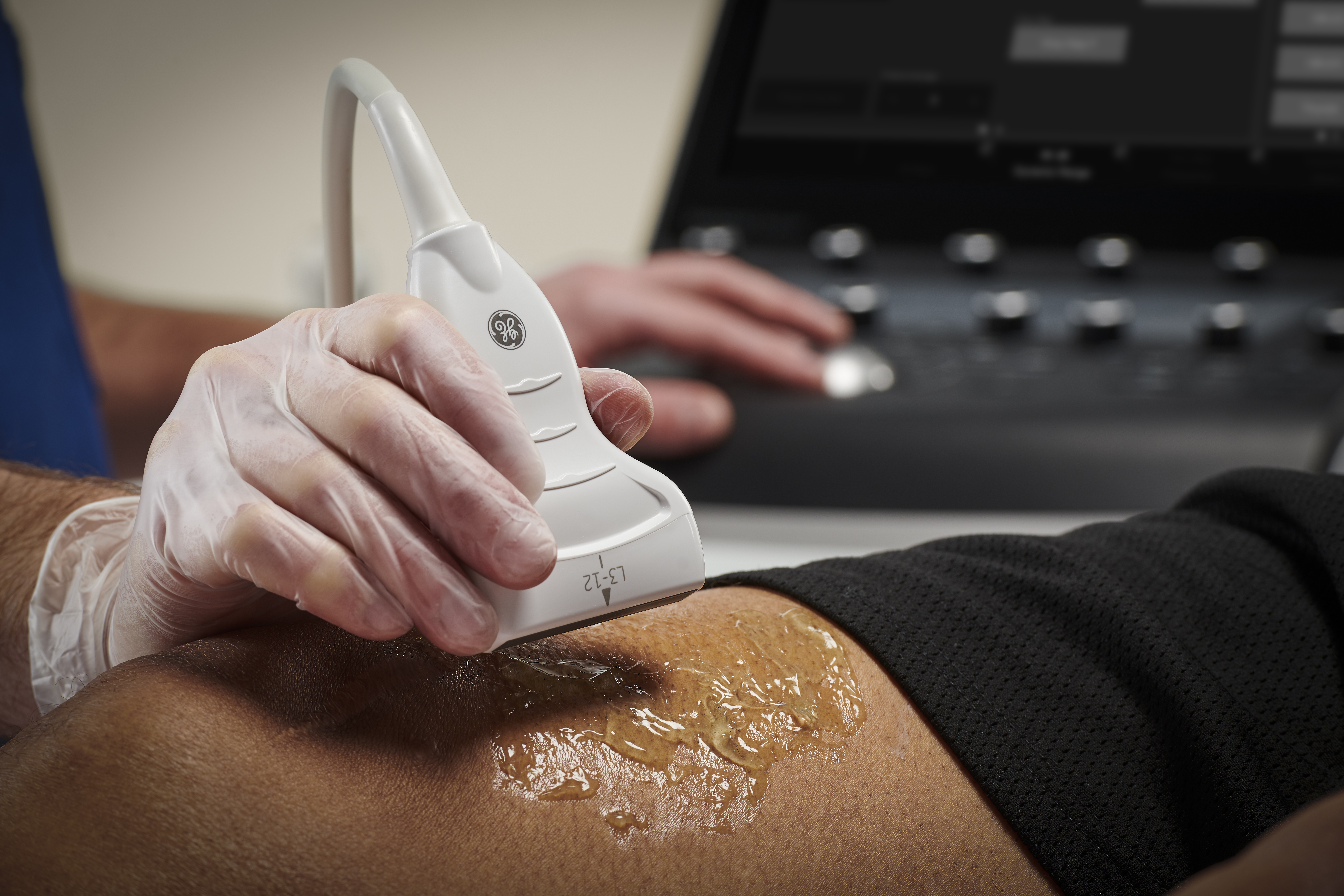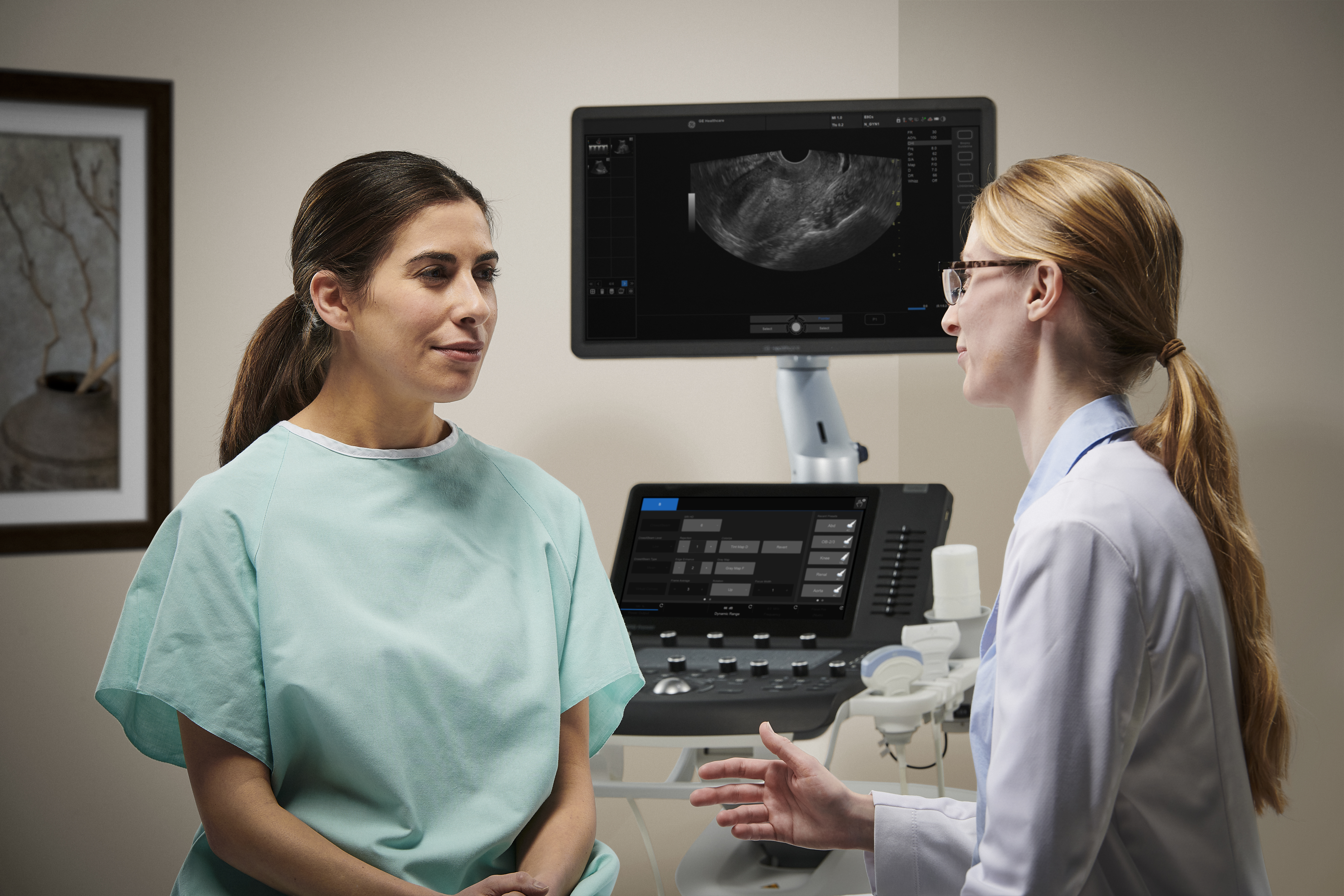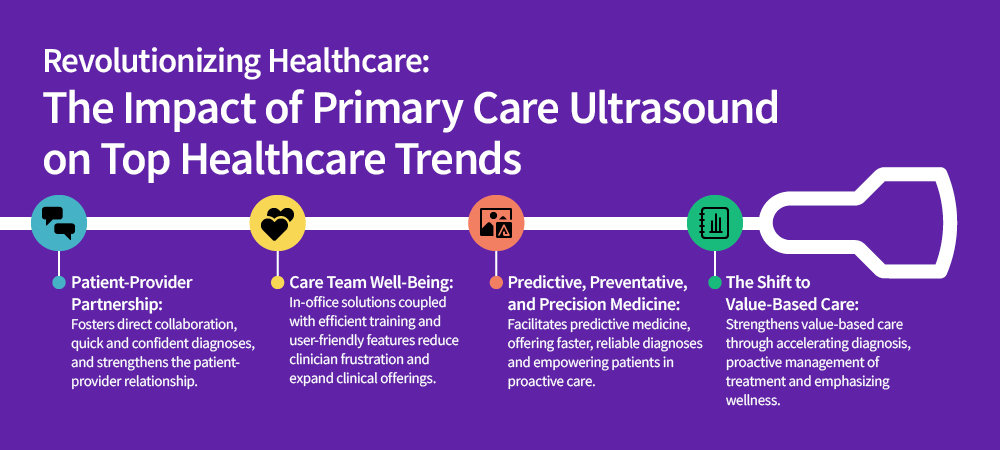The healthcare landscape is forever shifting—sometimes for the better, and other times, not so much. Even new advances necessitate reevaluation and adjustment before safely influencing productivity and efficiency. These developments drive both policy and practice, ultimately impacting performance. More than ever, these current trends center around the patient.
This may be due to the desire for a more direct path between diagnosis and treatment, the demand for fewer clinical and administrative barriers to care, or attention to personalized treatment.1 Healthcare trends are settling around patient experience—and rightly so.
Continued innovations in ultrasound technology have a key role in shaping healthcare's future. Let's take a look at some of the current and upcoming healthcare trends and where primary care ultrasound utilization fits into their continued progression.
Patient-provider partnership
The trend toward closer collaboration between doctors and their patients is served by primary care ultrasound via multiple avenues. It can enhance engagement between patients and their general practitioners from the start. Primary care physicians can confidently diagnose their patients due to intuitive ultrasound systems. This eliminates the need for referrals and a fragmented pathway that can take weeks or even months to navigate.
Patients seek active listening, care and connection, and transparency from their doctors; but Data from GE HealthCare's 2023 Reimagining Better Health survey indicates that 44% lack confidence that they can access care in a timely manner.2 Direct interaction on a diagnosis alleviates this burden. Patients can obtain the information and peace of mind to confidently move forward in their treatment with the guidance of their general practitioner, the care provider they tend to know best.
The accessibility of ultrasound features (like condition-specific probes, software packages, and productivity tools) assist general practitioners close the loop on the diagnostic journey, further strengthening the partnership with their patients. It's another layer of the patient-provider relationship that, ironically, starts at the beginning of the care journey.
Care team wellbeing
While today's healthcare trends continue to be patient centered, clinician frustration and burnout is rapidly escalating. Survey data shows that 42% are actively considering leaving the healthcare industry.2 Another 52% of clinicians do not feel they have enough time and resources to care for both patients and their families.
Resource limitations and tech-related process hindrances are some of the main barriers to daily and long-term clinician fulfillment. This is particularly problematic for general practitioners (GPs) who are consistently trying to grow their scope of practice, often on limited budgets. Bringing the right ultrasound technology into their office can be a relatively quick, easy, and low investment means of increasing clinical offerings. It can eliminate a significant portion of administrative frustration and delay clinicians face when trying to navigate the referral process.
Over 45% of clinicians who participated in the survey also say they do not receive adequate training on how to use available medical technology to its full potential. Ideal ultrasound technology not only provides an improved series of user-friendly features (e.g., hands-free voice command, automated image adjustment, and AI-enabled process management) but also the opportunity for robust and collaborative training from vendor personnel. These factors provide an abbreviated learning curve so even novice GPs can hit the ground running with ultrasound utilization.
Predictive, preventative, and precision medicine
Better healthcare starts with the diagnosis: The ability to predict and prevent the escalation of diseases is only as good as the diagnostic information driving it. Fifty-four percent of clinicians say healthcare focused on wellness is particularly important for the future.2 Current ultrasound technology is leading the way in the facilitation of better predictive medicine for GPs. By offering more reliable and faster diagnoses without the need for external referrals, GPs can help increase their patients' wellness and better empower them to be proactive in their own care and treatment outcomes.
The shift to value-based care
Recent data indicates that over half of all healthcare payments are tied to some level of quality of value metric.3 Value-based care is an increasingly common phenomenon that measures the improvement of patients' health outcomes versus the cost of care it takes to improve them. Its goal is to enable the healthcare system to create more value for patients.
Value-based care is strengthened and enhanced by ultrasound utilization through acceleration of diagnosis, additional proactive management of treatment, an emphasis on wellness, and less reliance on reactionary healthcare efforts. It helps patients and clinicians work together to either get out in front of urgent diagnoses or use advanced diagnostic efforts to improve and prioritize long-term wellness.
The way forward: Leveraging ultrasound technology toward healthcare's future
Primary care physicians are undoubtedly aware of the trends currently shaping healthcare delivery. Ultrasound technology helps drive these trends forward and can integrate into your practice with ease.
Take your place in healthcare's future and grow your practice's resources, capabilities, and improved diagnostics through primary care ultrasound. It can help tie these trends together to create a better experience for patients and providers alike. The ability to diagnose more diseases immediately magnifies your practice's impact and enables you to become a trendsetter in your own right.



